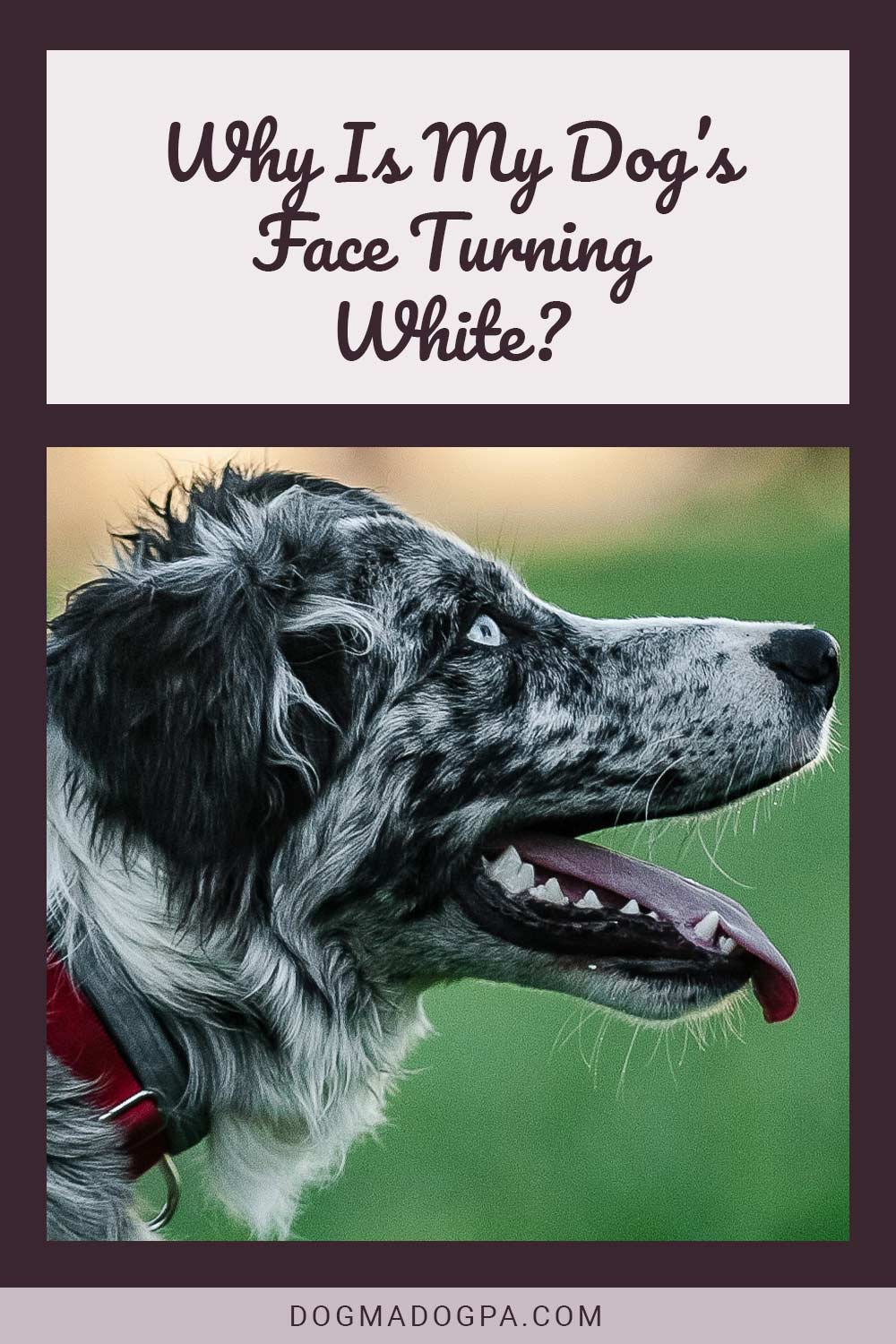With some dogs, owners may not notice that their faces turn white with age. But with other dogs, especially darker-colored ones, the white fur is certainly more noticeable.
A dog that was once all black in its younger years will suddenly grow white hair, just as a human will grow gray hair over time.
Is it Because He’s Getting Old?
The most common reason your dog’s face turns white is that they are getting older. Similar to how humans grow gray hairs once they reach a certain age.
Aging brings about the characteristic graying of canine coats. By the time a dog reaches 7 or 8 years old, the lighter fur on his muzzle and face has become pretty prominent.
Could it Be Caused by Stress?
Stress has negative effects on dogs just like it does on humans. New studies have shown that younger dogs with anxiety/stress issues start turning gray around the muzzle.
Other Common Reasons
Other common reasons why your dog’s face is turning white could include the following:
Vitiligo
Rarely, vitiligo can cause areas of skin or fur to lose their pigment. Even though vitiligo’s origins are a mystery, many researchers feel that it has a genetic component.
However, it is obvious that vitiligo develops when the cells in your dog’s body that produce melanin are damaged.
Genetics
It’s important to note that genetics can play a factor in determining when a dog’s hair begins to turn white, even if it looks like your dog isn’t old enough to start graying.
Despite their overall good health, some dogs may have a genetic predisposition to graying at an early age. Graying hair, or hair that gradually becomes increasingly silvery with age, can occur in even young animals, such as puppies.
Health Problems
Diseases of the liver or kidneys can also cause graying. This is a highly unusual manifestation of these disorders, though.
A lack of rapid elimination of poisons is the underlying cause of graying fur due to various conditions. The graying can be stopped if the underlying cause is treated.
Which Dog Breeds are More Prone to Turning White?
Aging is a natural part of life; just like humans, dogs experience hair loss and graying as they age. And just like humans, canine hair becomes increasingly lighter as the pigment cells responsible for color quit being generated in old age.
As a result, around the age of five, most dogs begin to gray, most often in the muzzle area.
This condition, known as progressive graying, is caused by a dominant gene and most commonly manifests itself in long-haired breeds.
Breeds of dogs include poodles and bearded collies, and several types of sheepdogs tend to carry this trait. The dominant nature of the gene means that it also occurs frequently in hybrids.
Can You Stop it?
In terms of aging, you can do nothing to stop your dog’s face from turning white. The same is true for breeds with the progressive graying gene.
However, if the white hair is a result of a health issue, it is worth going to the vet to find out if there is anything you can do to stop it from progressing.
Final Thoughts on Why Is My Dog’s Face Turning White
Aging is a natural thing that causes dogs’ faces to turn white, and nothing can be done about that, just as humans go gray after a certain age. Other dogs have a dominant gene in their genetics that makes them gray. Again, it’s a natural thing.
You only need to worry if the graying is a result of a health problem. If you feel that that may be a cause for your dog, then the best thing to do is take them to the vet.

